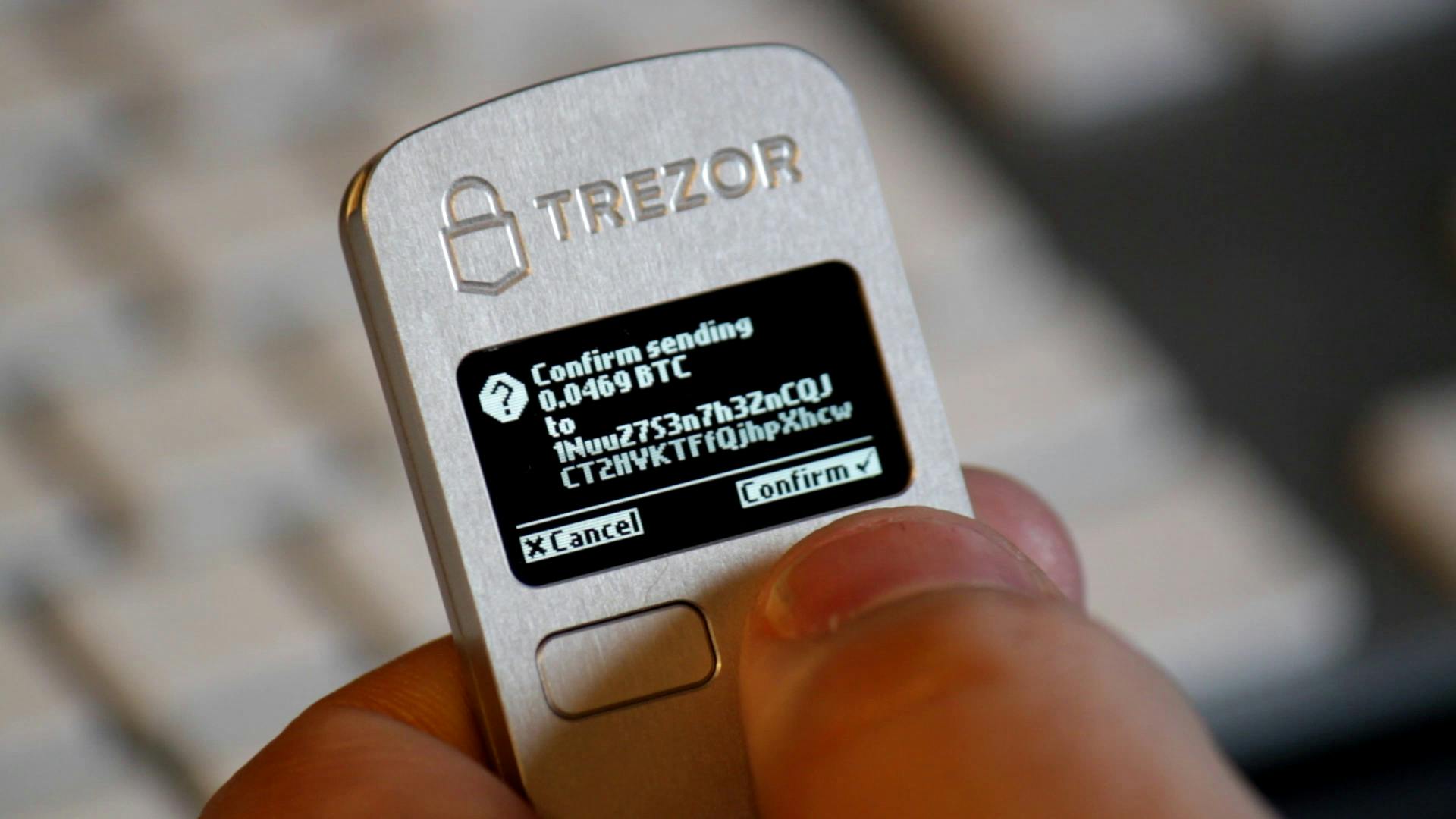
- All
- Tools
- Analytics
- Technical Analysis
- Trading
- Blockchain
- DeFi
- Guides
- Company News
- Educational
- Opinion
- Price Predictions
- Market News
- News
- Trading cases
- Practical guides
- Exchanges
- Trading signals
- Cryptocurrency
- Crypto bots
- Other
Become a crypto master
Learn everything about crypto,
trading and bots

Mining 101
Mining is an alternative means of income for many people because it allows you to earn money in the background. Mining requires advanced equipment with high computing power, sufficient space, efficient cooling equipment, uninterrupted Internet connection, and affordable electricity. It isn’t very complicated, but may appear a daunting task if you have never tried it before!
In this article, we will describe mining in simple words. We will also have a look at the prospects and risks of this earning model.
- Introduction to blockchain and cryptocurrencies
- What is the purpose of blockchain?
- A simple blockchain application example
- What is a cryptocurrency?
- Mining
- Mining difficulty
- How to profit from mining
- Legal risks of mining
- Financial risks of mining
- Reduction of the mining reward
- The impact of mining on the global economy
- Environmental Impact of Mining
- Conclusion
Start Trading on 3Commas Today
Get full access to all 3Commas trading tools with free trial period

Introduction to blockchain and cryptocurrencies
To understand mining, you need to understand what blockchain is first. In simple words, blockchain is a data set divided into blocks and combined into a single network. Each block stores the encrypted information of the previous block. Thus, all blocks are interconnected. Changing or deleting data in one block does not lead to a change or loss of information – data will remain documented on the network since each network node stores a complete copy of the data saved on the blockchain.
Blockchain is a digital technology. That is, all the data on the network is a code that is stored on millions of independent computers or devices.
What is the purpose of blockchain?
The blockchain aims to provide secure storage and transfer of information, such as money. If one user of the network transfers money to another participant, he can be sure that the money will reach the recipient because replacing or removing any block from the blockchain will not lead to loss of information, in this case, money.
A simple blockchain application example
Imagine that your colleague Bob asked to borrow $1000. You need to confirm the fact of the money transfer to prove you loaned Bob the funds. Usually, in such situations, you write a receipt. If the receipt is lost, you cannot prove that Bob owes you $1000. Therefore, in order to secure the transaction, instead of a receipt, Bob sends a message to all of your colleagues acknowledging that he owes you the money. Even if one of the messages is lost, the other colleagues will still have a copy, and everyone will know that Bob owes you money. This is a simplified example of how blockchain technology works.
What is a cryptocurrency?
Cryptocurrencies are digital money that is moved and stored using blockchain technology or its analogs. In essence, cryptocurrency is a code that has value in a fiat currency equivalent. The cryptocurrency owner can exchange it for any known “real world” currency, for example, USD. Cryptocurrencies differ based on the features of their system. For example, some cryptocurrencies are more about anonymity, while others are more concentrated on security. The first and most popular cryptocurrency is Bitcoin.
The price of cryptocurrencies is dynamic. This means that owning a cryptocurrency can enrich its owner. For example, in mid-March, you could buy one bitcoin for $4,800, and just two months later, in mid-May, the price of the first cryptocurrency was already hovering around $9,000, nearly twice as much. However, one must be alert as losing funds is also quite possible if thorough due diligence is not conducted.
Mining
The ability to earn from trading cryptocurrencies, and the growth of the use of blockchain technology, lead to an increase in the number of network participants.
Keep in mind that all actions within the network are conducted via the computer code, be it the storing or transferring information. The code is what fills the blocks, just like water fills a glass. Since the volume of blockchain blocks is limited, when new information is added to the network, it is necessary to create new blocks. The process of creating new blocks on the blockchain network (or its alternatives) is called mining.
A solution to a mathematical problem of high complexity is found through mining. These types of calculations are inaccessible to humans and performed using computing power. The process of mining lies at the core of securing the whole network. With each new block that is mined, a cryptocurrency reward is automatically deposited.
The more blocks are created by the miner, and the more expensive the mined cryptocurrency is, the more profitable the business will be.
A miner is a device that is responsible for solving the mathematical problems and securing the respective blockchain. It could be any computing device: ASIC miner, GPU, or CPU.
Is mining profitable?
Mining can be profitable. But before entering this business, the miner needs to consider the following factors:
- Equipment. The more powerful it is, the more reward you will get. More power also means a higher cost of equipment.
- Electricity and rental space cost. This factor depends on the region where the business is located. Miners try to operate their mining farms in regions with low electricity fees.
- Payback period. This is the time required for the equipment to generate profit, which would cover the costs of equipment, electricity, and rental space.
- Value and prospects of the coin. Mining profit depends on the price of the cryptocurrency and the number of miners involved in the process.
- Mining difficulty. If there are many miners, and they mine new blocks at a fast pace, the difficulty increases. This leads to the growth of equipment expenses and the necessity to increase the investments. Each cryptocurrency has its own difficulty indicator and its own dynamics – this must be taken into account as well.
Mining difficulty
Mining difficulty is a parameter of the factoring Proof of Work algorithm.
The essence of proof of work (PoW) is that the miner performs a series of complex calculations, which can be easily checked.
This is how it works: transactions are made and combined into blocks on the blockchain. Miners calculate the hash in order to confirm the validity of the transaction.
A hash is the information of any length that is encrypted into a specific sequence of letters and numbers of a fixed length. The hash compresses and seals the original data, which reduces the load on the equipment.
It is essential to understand that many miners are simultaneously trying to find a hash for a new block, and only those who are the first to find a solution to the task receive a reward.
Thus, mining profitability is affected by the complexity of this process, which depends on the hashrate of the network and the time spent on mining previous blocks.
Hashrate is the processing power of the equipment. The number of hashes a video card or a miner can calculate per second. The more powerful the equipment is, the more coins you get.
An increase in hashrate indicates that the number of miners connected to the cryptocurrency mining network is growing. Consequently, block mining time is reduced, and the difficulty is increased…
Therefore, with high competition, the cost of equipment and electricity increases, which makes mining unprofitable for some users.
In such cases, the miner has the option of joining a “pool”.
A pool is a community of miners who combine the computing power of their devices, which increases the likelihood of finding a new block.
How to profit from mining
There are different strategies aimed at earning through mining; here are a few of them:
- Enter the game during a slump or bearish period in the market cycle of cryptocurrencies, mine coins in advance, with less competition, to sell them later on when they grow in value.
- Mine a cryptocurrency in its early development phase when it is far from being popular. This will reduce competition and mining difficulty. However, you should be careful and evaluate the potential of the coin, as the project may burn out, and the price may fail to reach the expected levels.
- Set up a mining farm. If this is not possible, pool with other miners. Note that the amount of remuneration in pools directly depends on the share of your computing power provided to the combined total hashrate.
The mining farm is a high-tech data center equipped to mine cryptocurrencies.
In case the process is well-established, mining can become a source of stable income. Besides, it does not require fierce intellectual activity, as opposed to trading, for example.
However, mining a popular crypto, such as bitcoin (BTC) or ether (ETH), requires significant investments and is not possible unless a mining farm is set up, due to the high complexity of mining these cryptocurrencies.
For example, with a hypothetical cost of mining, the payback period for a farm that costs $5,000 and yields an annual profit of about $1,400, will equate to 3.5 years. This is taking into account the relative stability of the course and the mining difficulty.
Below are specific nuances and risks associated with mining:
Legal risks of mining
In some countries, the crypto industry and mining do not have a legislative base, while some jurisdictions completely ban this activity (Romania, Ecuador, Taiwan, Vietnam, Kyrgyzstan). This factor is essential to consider before starting your mining business.
Financial risks of mining
While running the mining operation, the miner must consider the possibility of various malfunctions, whether it is overheating or power surges. This may damage mining equipment. The acquisition of new equipment, while the old one has not yet paid off, will cause losses and reduce profits.
Reduction of the mining reward
Over time, equipment maintenance costs are rising. At the same time, the profit received from mining cryptocurrencies is gradually being reduced. Halving is the main contributing factor in this case.
Halving is an event that regularly reduces miner reward.
In the case of Bitcoin, halving occurs every four years. The result of this event is a reduction of the miner reward in half.
After the 3rd halving of 2020, the reward fell from 12.5 BTC to 6.25BTC per block. Halving reduces the interest of some cryptocurrency mining participants, but this phenomenon is one of the core features of bitcoin; hence it is essential for the network. Halving limits the issuance of new coins, ensuring that the planned issuance rate is followed. This practice contributes to the growth of prices through deflation, which is vital for cryptocurrency, as it keeps its purchasing power afloat.
The impact of mining on the global economy
Regardless of its profitability, mining will always be in demand since it is an integral part of digital currencies.
First of all, mining heavily depends on electricity; therefore, it affects the latter’s consumption on a global scale.
Miners around the world consume 0.5% of the combined capacity of power plants. If the assets continue their growth, the level of expenditure is predicted to grow up to 5%, which could negatively affect the global economy.
According to 2017 data, the amount of energy consumed by miners worldwide amounted to 13,647 MTNE or 158,714,610 GW⋅h. Today, these values continue to grow.
In the same year, miners spent $776 million on 3 million GPUs.
It turns out that if a large volume of miners leaves the industry, many companies will suffer losses and begin compensating them by increasing the prices for electricity and equipment.
Thus, mining occupies a significant share in the economic niche. The viability of mining as an industry directly affects the economy, while the prices depend on its scale.
Environmental Impact of Mining
Cryptocurrencies are currently mined on a massive scale. There is no exact information about the energy consumed by the miners. However, according to Coinshares, they use 35 TWh, which is more than the country of Ireland consumes in a year.
According to the CEO of Zerocracy, Egor Bugaenko, the annual production of Bitcoin leads to the release of 10 megatons of carbon dioxide into the atmosphere.
There are also cases of a positive impact on the environment. The Canadian company Myera Group heats the agricultural greenhouses with the heat generated by the Bitcoin farm.
The Ukrainian nuclear power plant is considering the introduction of mining. According to the Ministry of Energy, this will help not only to maintain guaranteed loads but also to profit from excess energy.
The crypto industry associations of many countries are considering ways to solve the negative aspects of mining, aimed at optimizing, prudently managing the consumed resources and mitigating the consequences of mining.
Conclusion
Mining, as examined in detail, stands as a multifaceted procedure intrinsic to the essence of many cryptocurrencies. It is paramount to understand that mining is not just a means to acquire digital currency, but it is fundamentally the backbone that ensures the security and functionality of the blockchain system. The practice, however, is not without its challenges and intricacies.
The interplay between blockchain technology and the act of mining provides a transparent, immutable, and secure system. The story of Bob borrowing money, serving as a metaphor for the blockchain, simplifies its profound importance: ensuring transactions are tamper-proof, verifiable, and accessible to all network participants. As we navigate through 2023, the reliance on digital technology, especially blockchain, continues to rise, making the role of miners ever more significant.
One of the essential aspects that every potential miner must comprehend is that the field's attractiveness does not guarantee automatic success. The complex algorithms, high computational power requirements, and escalating difficulty levels make it an arena for the well-prepared. This preparedness is not merely in terms of equipment but also encompasses a keen understanding of the dynamics of the cryptocurrency market, the legal landscape, and the environmental impacts. The global impact of mining, be it on electricity consumption or environmental concerns, cannot be understated. The numbers indicate that the mining industry consumes power at levels comparable to entire nations, and this is set to grow if current trends persist.
Yet, there's a silver lining: the evolving nature of the industry means there are opportunities for innovation. Whether it's utilizing the excess heat from mining operations for agricultural purposes, as demonstrated by the Canadian company Myera Group, or nuclear power plants contemplating the integration of mining, there is a clear drive towards sustainability and efficiency. The critical task ahead for the crypto community and regulatory bodies worldwide is to strike a balance between harnessing the potential of mining and mitigating its adverse environmental impacts.
Moreover, the economic implications of mining extend beyond the immediate community. It serves as a linchpin for several auxiliary industries, including energy providers and hardware manufacturers. The ripple effect of the mining industry's successes or failures, therefore, has broader economic implications. The delicate balance between ensuring profitability for miners, while also safeguarding the global economy and the environment, necessitates robust strategies and foresight.
To sum it up, as we stand in 2023, mining remains an integral component of the digital currency ecosystem. Its influence extends to the global economy, environmental considerations, and the very foundation of how transactions occur in a digital age. As with any evolving industry, challenges are inevitable. However, the adaptability and innovative potential of the crypto community promise a future where these challenges can be transformed into opportunities for growth and sustainability.

A proven leader, successful at establishing operational excellence and building high-performance teams with a sharp focus on value creation and customer success.
READ MORE
- Introduction to blockchain and cryptocurrencies
- What is the purpose of blockchain?
- A simple blockchain application example
- What is a cryptocurrency?
- Mining
- Mining difficulty
- How to profit from mining
- Legal risks of mining
- Financial risks of mining
- Reduction of the mining reward
- The impact of mining on the global economy
- Environmental Impact of Mining
- Conclusion




